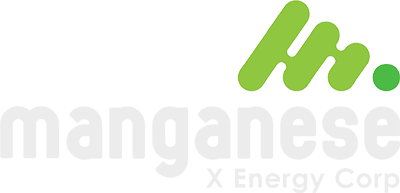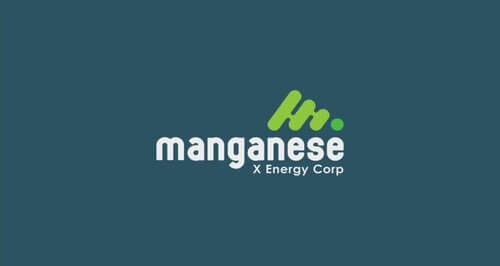Martin Kepman CEO of Manganese X Energy educates. The importance of all future Manganese mined domestically, a critically important mineral.
Investing in Manganese is a Future-Friendly Mining Idea Explains Martin Kepman CEO of Manganese X Energy!
Manganese will affect how we travel, live our lives while being socially responsible to Planet Earth!
Manganese is a significant modern metal. More than 90% of worldwide utilization is attached to the steel and development industries, with China being a substantial buyer of the world’s fourth most widely used metal: Manganese.
Despite its strong base of interest, the costs of acquiring manganese have in the last few years continued to be volatile, due to its problematic sourcing either from its ethically challenged mining practices in Africa or producing a high-quality manganese by utilizing toxic selenium in Electrolytic Manganese Metal (EMM) process.
As stated in a late 2020 Roskill market report on the metal, significant new developments in manganese mining in Ghana, Gabon, and South Africa, may be attributable to an earlier expansion in Chinese port stockpiles, which may have prompted an oversupply in the manganese market, “forcing downward pressure” on the price of manganese in 2019 and into mid-2020.
“We foresee greater demand for manganese arising from electric vehicle EV expansion, resulting in an upward price for manganese,” explains CEO Martin Kepman:
1) Tesla’s projected to put into operation 5 new Gigafactories around the world in the next 5 years
2) 6 new Gigafactories planned by Volkswagen by 2030
3) Ford is using its signature 150 pickup truck series and launching their lightning EV 150 truck, which also converts into a generator, to lead the charge. Ford is forecast to invest 22 billion through 2025 into their Hybrid EV vehicle projects.
4) GM is investing 10 billion dollars in developing 25 EV models
5) China is planning to phase out the internal combustion engine by 2035.
Moreover, recently, there was a spike in the price of manganese briefly in mid-2020 as COVID-19 lockdowns slowed down manganese production.
In the recovery period, China has benefited from a strong infrastructure-focused economic rebound, much earlier than other countries who were managing COVID-19. This results in a promising outlook for Chinese demand in manganese, as their focus on obtaining manganese continues to benefit from the development of their infrastructure projects.
As you read further you will gain a better perspective on manganese’s supply and demand dynamics and why investing in manganese could be a future-friendly mining idea.
The Demand and Supply of Manganese
As mentioned earlier, the steel and construction sector continue to represent the most significant demand for manganese. Altogether, this industry is responsible for 85 to 90 percent of all manganese purchases, utilizing it as a deoxidizing and desulfurizing additive as an important alloying constituent. Manganese’s elemental qualities have been important in continuing to improve the strength, durability, and solidity of steel.
Steel area industry demand was a vital driver of manganese’s value a year ago and it continues to fundamentally drive total demand. New infrastructure projects that impact the need for manganese in countries like America, Japan, and China, are on the increase which was unusual in years past for manganese utilization which was usually driven up by the steel business.
“As new infrastructure projects come online, like Biden’s new $2 trillion infrastructure plan that is being touted as the most important transformational effort of the 21st century, manganese demand will continue to increase,” explains Martin Kepman.
Of course, manganese has other applications too, with the disposable and rechargeable battery space slotted as the second largest buyer of manganese today next to the steel industry. Many experts accept that manganese’s demand is all set for a rapid increase, driven by the future electric vehicle (EV), hybrid vehicle and energy backup storage device manufacturing industries.
Manganese dioxide was traditionally used as a depolarizer in alkaline batteries. However, this is no longer the most important characteristic of utilization for the battery market that is most attractive for manganese. Today, it is the lithium-ion battery chemistry infused with manganese that is becoming the major interest. The rechargeable battery and backup power storage industry that will be requiring more and more manganese to incorporate in lithium-manganese oxide batteries and lithium-nickel-manganese-cobalt oxide batteries.
Electrolytic manganese dioxide is used as a cathode material in lithium-ion batteries. The investment community believes that it’s extremely likely that the demand for manganese will spike as it’s importance in the improved battery chemistry application in lithium-ion batteries continues to grow and will become the electric gold of the future.
Manganese X Corp expects a huge development in the manganese market because of its demonstrated value in clean energy applications. Moreover, we expect the increased proportions of manganese projected to be used for nickel-metal hydride (NiMH) and lithium-particle (Li-particle) batteries to be significant and will affect all future rechargeable batteries, EV and Hybrid electric vehicles and energy backup power storage industries.
Manganese is additionally utilized in synthetic substances, like composts, animal feed, chemical, food, and drug industries. The major manganese suppliers which include, China, Australia, and South Africa, currently hold 80% of the world’s reserves. Manganese’s global production is projected to experience an increase of 28.2 million metric tons (MT) by 2022 from an 18 million MT in 2017, driven by a foundational increase in infrastructure enhancing projects, eco-friendly vehicles, and the rapid urbanization
The Core Facets Surrounding Manganese
- Manganese is an essential and irreplaceable element used in steel production.
- The steel industry projects a 2% growth per annum.
- Manganese is a significant, essential component of the rapidly growing electric vehicle market
- Manganese’s clean energy applications are an upside and makes it preferable to Cobalt and it’s ethically challenged sourcing issues.
- Manganese enhanced batteries are more robust, higher density and much less toxic than Cobalt
- Manganese is far less expensive per ton to produce than Cobalt.
- The forward momentum of manganese will be driven by integrated companies that are disrupting the currently saturated vertical market segments.
The Impact of COVID-19 on Manganese Stocks
2020 brought uncertainty to the manganese space when Covid-19 hit, affecting market segments around the globe. The first country to see it’s demand for manganese impacted was China, as the steel production rebounded in March, when South Africa went into lockdown, leading to the operational shutdown of mines supplying the ferroalloy industry. This led China to raise production by 36 to 38 percent, which led to concerns about future supply.
While South Africa rebounded well with it’s increased shipments to China due to the strong Chinese high steel intensity demand driving it’s recovery from COVID-19 which fueled an increased demand for manganese ore.
Despite this strong demand, supply was even better than anticipated and stockpiles at Chinese ports witnessed a heavy increase, peaking in early December. The rising stocks kept a lid on any significant price recovery during Q2 2020.
Steel production was significantly low in the second quarter outside China, recovering slowly in Q3 and picking up well in Q4.
Manganese Outlook 2021: What’s ahead?
New manganese mines are coming online, in parallel with iron ore expansion, across the globe. Prevailing theory is that global infrastructure is in need of maintenance and replacement, particularly since the 2008 global financial crisis, and it is expected that governments will continue to use infrastructure to stimulate economic recovery as we emerge into a post COVID-19 world.
Be that as it may, outside of its steel applications, manganese is quietly turning into a significant component in the EV and hybrid electric vehicle market with developing demand expected.
The questions one should be asking are the following:
1) Q- Why should a potential investor invest in manganese stocks?
A- Multiple Gigafactories are being opened up for the EV and hybrid vehicle industry, replacing the internal combustion (IC) engine. The US Government has committed to replacing all federal IC vehicles to EV.
2) Q- Why is the current rechargeable battery industry that supplies the EV and hybrid electric vehicle industry in search of additional raw materials.
A- Forecasts predict an explosion in demand for manganese at 23% annually per year until 2030.
3) Q- How will the newly proposed battery chemistry reconfiguration of cobalt, lithium, nickel, and manganese proportions impact the emerging environmentally friendly and clean energy industries?
A- By eliminating the cobalt in the original NMC batteries and increasing to 33% the percentage of manganese, drastically reducing the cost of the battery and dramatically enhancing its performance, the choice is clear.
4) Q- What are the primary reasons driving domestic production of raw materials, captivating manufacturers, and charging the impetus to fabricate the key components for the EV and hybrid electric vehicles components locally?
A- Opening a supply chain between Canada and the US and having manganese (as one of the 35 defined critical elements) provided locally, benefiting both countries will eliminate the need for foreign imports and continue to promote an environmentally friendly mining environment.
5) Q- Why should financial backers be interested in Canadian Manganese deposits that can produce a high-quality Manganese end product, a significant factor in the worldwide EV and hybrid industry, energy backup power storage and rechargeable battery markets?
A- We can develop a superior manganese product by eliminating selenium (which is highly toxic to the environment) in the production process, now dominant of 98% of the world’s battery grade MNSO4, while being competitive worldwide but remaining in our own backyard.
Manganese X Energy Corp. (TSXV: MN) (FSE: 9SC2) (OTC:QB:MNXXF) (FRANKFURT:9SC2) with its head office in Montreal QC, owns 100% of the Battery Hill property project (1,228 hectares) located in New Brunswick Canada. Battery Hill is strategically situated 12 kilometers from the US (Maine) border, near existing infrastructures (power, railways, and roads). It encompasses all or part of five manganese-iron zones, including Iron Ore Hill, Moody Hill, Sharpe Farm, Maple Hill and Wakefield. According to Brian Way’s (2012) master’s thesis on the Woodstock manganese occurrences, that includes Battery Hill, the area “hosts a series of banded iron formations that collectively constitute one of the largest manganese resources in North America, approximately 194,000,000 tons.”
Media contact:
Rene Perras Digital PR Consultant for Manganese X Energy Corp
514-816-4446
When sharing on social media please help us by using these hashtags:
#ManganeseXEnergyisElectricGold #ManganeseXMinerforElectricGold
#ManganeseisElectricGold #ManganeseXisElectricGold
New Brunswick, Canada
Cautionary Note Regarding Forward-Looking Statements:
Neither TSX Venture Exchange nor its Regulation Services Provider (as that term is defined in the policies of the TSX Venture Exchange) accepts responsibility for the adequacy or accuracy of this release. This news release contains “forward-looking information” which may include statements with respect to the future exploration performance of Manganese X Energy Corp (the “Company”). This forward-looking information involves known and unknown risks, uncertainties and other factors which may cause the actual results, performance, or achievements of the Company to be materially different from any future results, performance or achievements of the Company, expressed or implied by such forward-looking statements. These risks, as well as others, are disclosed within the Company’s filing on SEDAR, which investors are encouraged to review prior to any transaction involving the securities of the Company. Forward-looking information contained herein is provided as of the date of this publication and the Company disclaims any obligation, other than as required by law, to update any forward-looking information for any reason. There can be no assurance that forward-looking information will prove to be accurate, and the reader is cautioned not to place undue reliance on such forward-looking information. We seek safe harbor.
Sources:
https://www.inverse.com/innovation/tesla-gigafactory-what-we-know
https://www.theverge.com/2021/4/27/22405470/ford-ev-battery-manufacturing-research-center
https://www.nytimes.com/2021/03/31/business/economy/biden-infrastructure-plan.html
https://www.usgs.gov/centers/nmic/manganese-statistics-and-information
https://pubs.usgs.gov/periodicals/mcs2021/mcs2021-manganese.pdf
https://www.statista.com/statistics/247615/global-production-of-manganese-ore/
Content Disclaimer:
DISCLAIMER of Liability. IN NO EVENT SHALL OUR PR COMPANY BE LIABLE OR RESPONSIBLE TO YOU OR ANY OTHER PERSON FOR ANY DIRECT, INDIRECT, INCIDENTAL, CONSEQUENTIAL, SPECIAL, OR EXEMPLARY DAMAGES OF ANY KIND, INCLUDING WITHOUT LIMITATION, LOST PROFITS OR LOST OPPORTUNITIES, EVEN IF ADVISED OF THE POSSIBILITY OF SUCH DAMAGES IN ADVANCE AND REGARDLESS OF THE CAUSE OF ACTION UPON WHICH ANY SUCH CLAIM IS BASED, INCLUDING, WITHOUT LIMITATION, ANY CLAIM ARISING OUT OF OR IN CONNECTION WITH ANY OF THE CONTENT, INCLUDING, WITHOUT LIMITATION, AUDIO, PHOTOGRAPHS, AND VIDEOS, OR OF THE ACCURACY, RELIABILITY, OR LEGALITY OF ANY STATEMENT MADE IN OR OMITTED FROM ANY advertisement, sponsorship, endorsement, testimonial, opinion, or other product-related or service-related statement or review appearing in the Websites or in ANY post or article distributed via the Websites.


